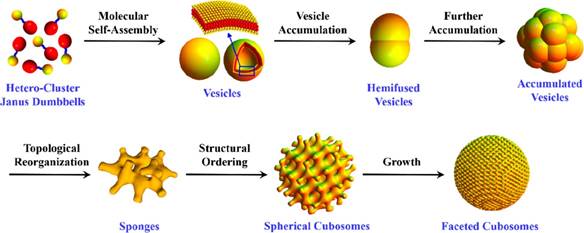
News and Events
Science Highlights
Home /
|
|
|
Dielectric materials are greatly desired for electromagnetic absorption applications. Lots of research shows that conduction loss and polarization are two of the most important factors determining complex permittivity. However, the detailed dissipation mechanisms for the improved microwave absorption performance are often based on semiempirical rules, lacking practical data relationships between conduction loss/po...
|
|
|
|
Ordered mesoporous carbon (OMC) is a promising candidate for the anode of sodium-ion batteries (SIBs). However, low electronic conductivity and scanty defects are the bottlenecks that result in the unsatisfied electrochemical performance. A team from the key laboratory of coal science and technology of Taiyuan University of Technology demonstrate the nitrogen and sulfur co-doped strategy to modify the OMC, and thu...
|
|
|
|
In this work, in situ combination of TiO2 and carbon was achieved by pyrolysis of tetrabutyl titanate and polyvinylpyrrolidone at high temperature, and Ti–O–C sodium storage channels were formed at the two-phase interface. Using thiourea as the doping source, heteroatom N and S were introduced to induce surface defects on the graphite layer to accelerate the mass transfer of Na+ from the surface carbon layer to ...
|
|
|
|
Subtle structural changes during electrochemical processes are often related to the degradation of the electrode materials. Accurately tracking the minute variations such as crystal structure, chemical bonds, and electron/ion conductivity under typical battery operating conditions will give an in-depth understanding on the reaction mechanism of electrode materials, as well as reveal pathways for optimization. A te...
|
|
|
|
The team of Prof. Wang Wei from Nankai University and their collaborators worked on the cubosomes in order to reveal the mechanism of formation of bicontinuous cubic-phase structures. The result was published in Journal of the American Chemical Society (J. Am. Chem. Soc. 2019, 141, 831-839).
|
|
|
|
Interfacial engineering of the electrocatalysts has been emerging as one of the most effective methods to improve activity, selectivity and the stability during the electrocatalysis.Conventional strategies to construct the interface of two different components adopt the epitaxial growth method in solution conditions, in which the crystal face of substrate and epitaxial interfaces should be exactly controlled. Here...
|

Copyright © 2011 - 2012 Beijing Synchrotron Radiation Facility






